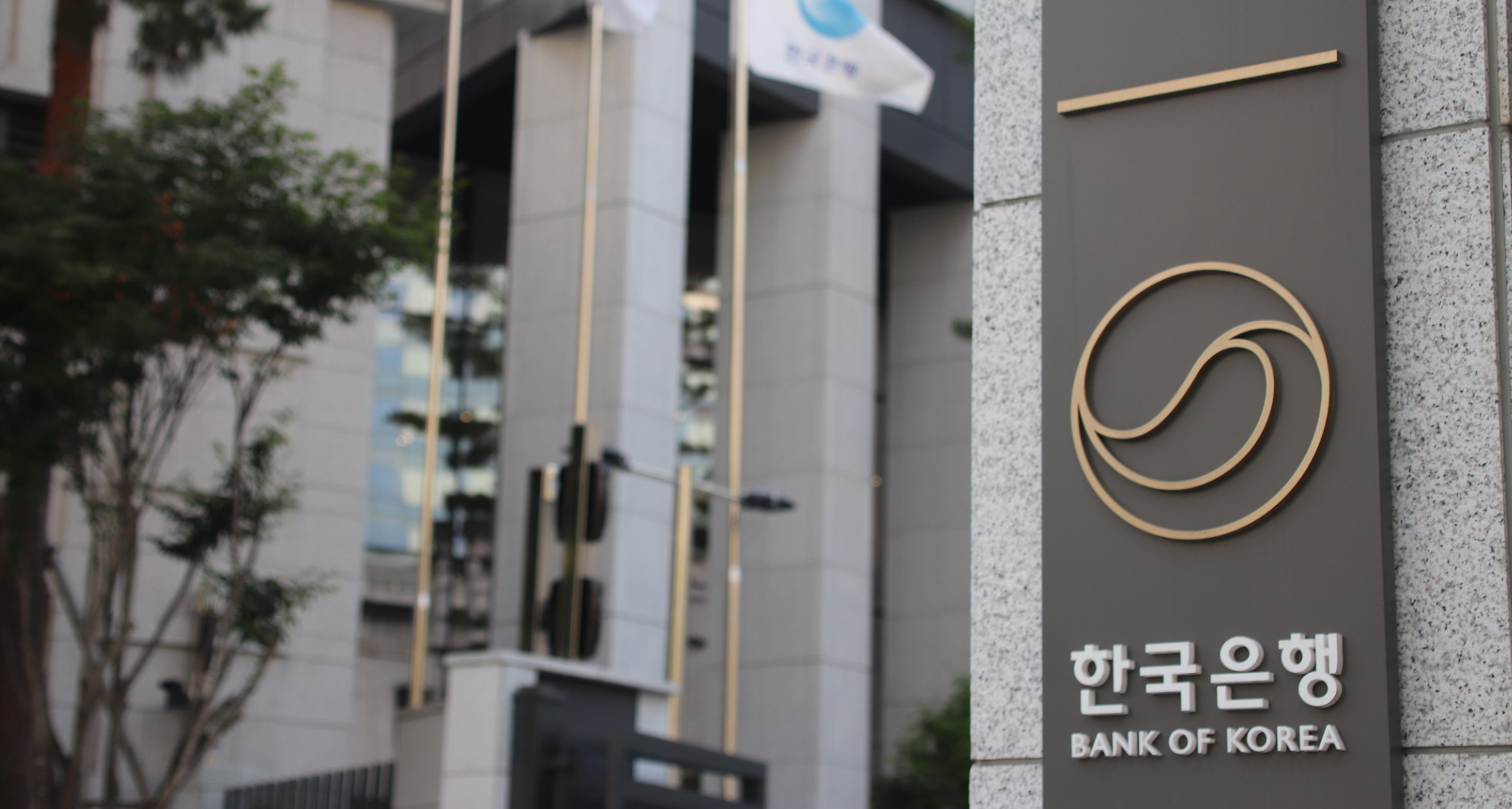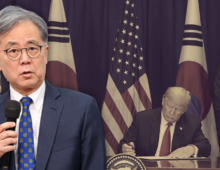|
Analysis South Korea faces tense monetary future amid an escalating global currency warAs nations devalue their currencies, the BOK combats inflation while balancing economic growth with market stability John LeeFebruary 24, 2025  An illustration of rolled-up bank notes on a chess board | Image: Korea Pro South Korea is stepping into a monetary minefield as the global currency war intensifies, with the Bank of Korea (BOK) expected to cut interest rates by 0.25 percentage points this week in a bid to counter slowing economic growth. While this move signals an attempt to bolster domestic demand, it also highlights the BOK’s limited room for further easing as policymakers balance inflation risks, capital flight and exchange rate volatility in an increasingly unstable global economic environment. BOK’S LIMITED RATE CUT The BOK’s likely decision to cut interest rates, albeit cautiously, reflects deepening concerns about South Korea’s economic slowdown. The central bank slashed its 2025 GDP growth forecast to 1.6 to 1.7% in January, while Morgan Stanley lowered its projection to 1.5%. However, with the U.S. ramping up tariffs on its global trade partners, South Korea’s economy could expand by as little as 1.3% this year, significantly underperforming expectations. The International Monetary Fund initially expected South Korea to log a 2.2% growth rate for this year. The job market also shows signs of distress. Last December saw a year-on-year net loss of 52,000 jobs. The construction and wholesale and retail sectors saw job losses of 49,000 and 61,000, respectively throughout last year, suggesting that real estate investment is weakening, posing further risks to growth. While consumer sentiment has improved from its December low point, it remains well below pre-crisis levels as households reduce discretionary spending amid economic uncertainty. At the same time, inflation remains a concern. January’s consumer price index rose 2.2% year-on-year, the fastest pace in five months, driven in part by higher import costs and supply chain pressures. This inflationary uptick limits the BOK’s ability to cut rates aggressively, as further monetary easing could trigger excessive won depreciation, raising import prices and eroding purchasing power.  U.S. President Donald Trump signs an executive order imposing 25% tariffs on all steel and aluminum imports with Commerce Secretary nominee Howard Lutnick standing next to him, Feb. 11, 2025 | Image: White House GLOBAL CURRENCY WAR INTENSIFIES The backdrop to South Korea’s monetary dilemma is a worldwide trend of competitive devaluations as countries seek to protect their exports amid intensifying U.S. tariffs. Major central banks have begun easing policies, including the European Central Bank, which is expected to cut key interest rates multiple times this year, and the Reserve Bank of India, which announced a $10 billion dollar/rupee swap auction to boost rupee liquidity. Meanwhile, Canada’s central bank, which cut interest rates last month, may consider further policy adjustments to counteract U.S. tariffs. Moreover, Australia cut rates last week for the first time in over four years as did New Zealand amid moderating inflation. This global race to devalue currencies places South Korea in a precarious position. If the BOK refuses to cut rates further, the won could appreciate relative to other weakening currencies, making South Korean exports less competitive. If it cuts too aggressively, capital flight could intensify, further weakening the won and increasing inflationary pressures. The U.S. Federal Reserve’s policy stance complicates matters further. While President Donald Trump has called for immediate rate cuts, the Fed has resisted political pressure, holding rates steady after January’s Federal Open Market Committee meeting. The Fed’s decision has kept the U.S. dollar strong, pushing emerging market currencies — including the South Korean won — downward. The BOK must now navigate the fine line between maintaining monetary stability and ensuring the won does not become overvalued in a weakening global environment. SOUTH KOREA’S POLICY CONSTRAINTS The BOK is constrained by both external monetary conditions and domestic vulnerabilities. A prolonged period of high interest rates would exacerbate debt burdens for households and businesses, especially in the real estate sector, where mortgage defaults could rise if borrowing costs remain elevated. However, an aggressive rate-cutting cycle is unlikely, given the risks of further won depreciation and its impact on inflation. South Korea also faces the challenge of potential foreign exchange market intervention. If the won weakens too sharply, the BOK may be forced to stabilize the currency through intervention, a move that could draw scrutiny from the U.S. While Washington removed Seoul from its list of designated currency manipulators for the first time in seven years in Nov. 2023, the U.S. Treasury Department included the ROK on its “Monitoring List” for currency practices last November. Given South Korea’s $66 billion trade surplus with the U.S. last year, the Trump administration may relist the country on its foreign exchange watchlist and could escalate tensions if the BOK is perceived as actively managing the exchange rate. Compounding these risks is Trump’s history of using tariffs as a bargaining tool. The White House has already signaled plans to revisit trade agreements, and South Korea, a major exporter of semiconductors, automobiles and steel, could find itself in Washington’s crosshairs. A new wave of U.S. tariffs on South Korean goods would place further strain on the won and pressure the BOK to respond with additional rate cuts.  Bank of Korea, June, 26, 2024 | Image: Korea Pro THE FUTURE OF BOK POLICY For now, the BOK appears set to make a single, limited rate cut, with no immediate plans for further easing. Policymakers may be betting on a more stable external environment in the coming months, allowing them to avoid a full-fledged rate-cutting cycle. However, this strategy carries risks. If the global economy deteriorates further or trade tensions escalate, South Korea could be forced into additional rate cuts despite the risks of inflation and capital flight. One alternative path for the BOK is targeted fiscal policy. While monetary policy adjustments have limitations, the main opposition Democratic Party has proposed a $24.5 billion (35 trillion won) supplementary budget, including infrastructure investment and targeted spending programs, to cushion the economy. These measures could help offset weaker external demand without exacerbating inflationary pressures. Another option is a more coordinated approach with other central banks. South Korea could engage in policy coordination efforts with key trading partners to mitigate the risks of excessive currency volatility. If global economic conditions worsen, multilateral responses could help stabilize financial markets and prevent disorderly capital movements. LIMITED OPTIONS, HIGH RISKS The BOK’s expected 0.25 percentage point rate cut this week will be a cautious move in response to South Korea’s slowing economy, but it does not mark the beginning of a prolonged easing cycle. The central bank is treading carefully, trying to balance growth concerns with inflationary pressures and foreign exchange stability. The global currency war is placing South Korea in a difficult position. As other nations aggressively cut rates, the won risks becoming overvalued, hurting exports. But if the BOK follows suit with deeper cuts, it could weaken the won excessively, leading to inflation and capital flight. The BOK finds itself facing difficult choices. With limited policy options and rising global uncertainty, the central bank’s next steps will be among the most closely watched monetary decisions in years. The success or failure of its cautious approach will shape the country’s economic trajectory well beyond 2025. Edited by Alannah Hill South Korea is stepping into a monetary minefield as the global currency war intensifies, with the Bank of Korea (BOK) expected to cut interest rates by 0.25 percentage points this week in a bid to counter slowing economic growth. While this move signals an attempt to bolster domestic demand, it also highlights the BOK’s limited room for further easing as policymakers balance inflation risks, capital flight and exchange rate volatility in an increasingly unstable global economic environment. Get your
|
|
Analysis South Korea faces tense monetary future amid an escalating global currency warAs nations devalue their currencies, the BOK combats inflation while balancing economic growth with market stability  South Korea is stepping into a monetary minefield as the global currency war intensifies, with the Bank of Korea (BOK) expected to cut interest rates by 0.25 percentage points this week in a bid to counter slowing economic growth. While this move signals an attempt to bolster domestic demand, it also highlights the BOK’s limited room for further easing as policymakers balance inflation risks, capital flight and exchange rate volatility in an increasingly unstable global economic environment. © Korea Risk Group. All rights reserved. |











